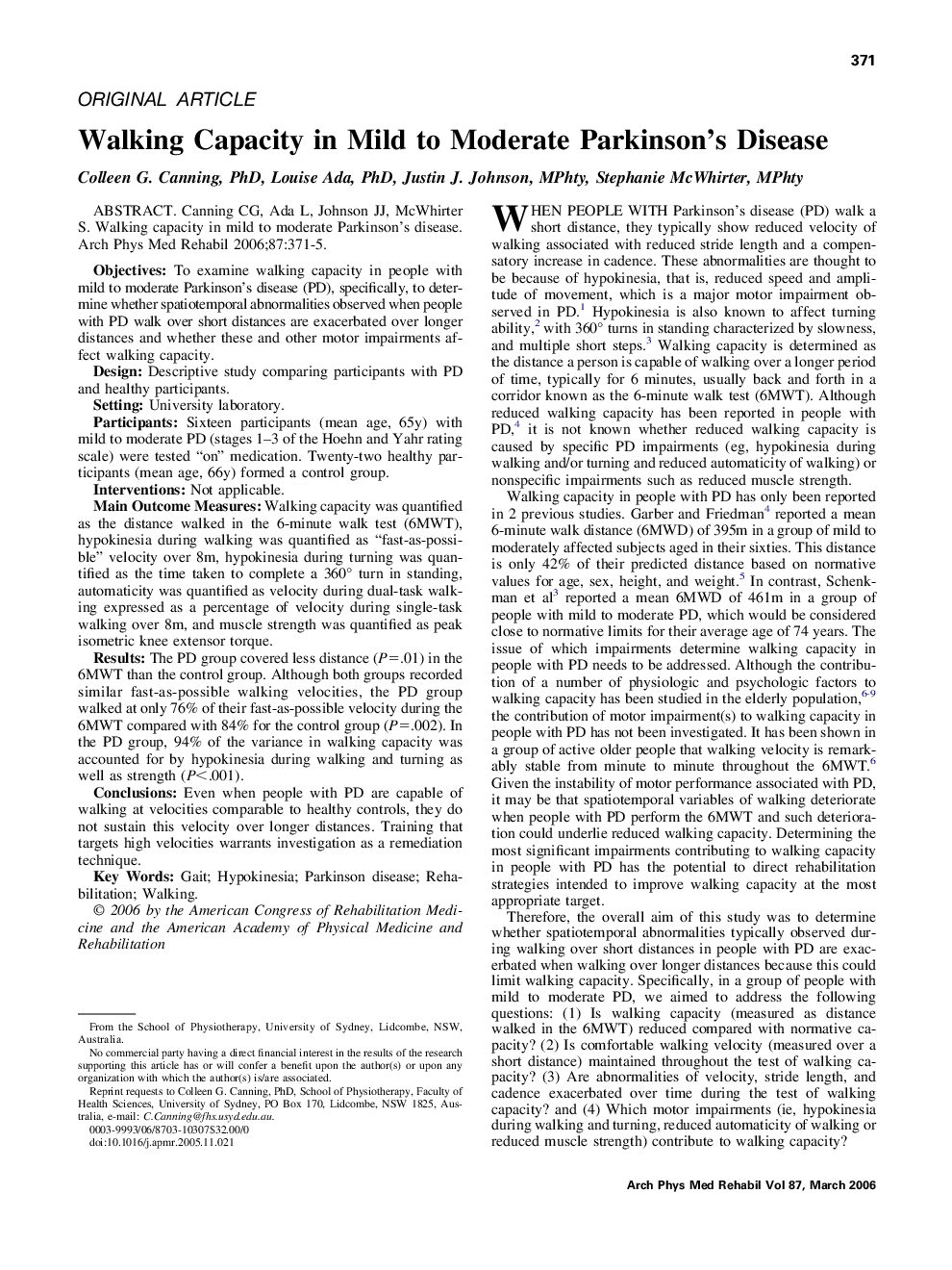| کد مقاله | کد نشریه | سال انتشار | مقاله انگلیسی | نسخه تمام متن |
|---|---|---|---|---|
| 3451897 | 1595809 | 2006 | 5 صفحه PDF | دانلود رایگان |

Canning CG, Ada L, Johnson JJ, McWhirter S. Walking capacity in mild to moderate Parkinson’s disease.ObjectivesTo examine walking capacity in people with mild to moderate Parkinson’s disease (PD), specifically, to determine whether spatiotemporal abnormalities observed when people with PD walk over short distances are exacerbated over longer distances and whether these and other motor impairments affect walking capacity.DesignDescriptive study comparing participants with PD and healthy participants.SettingUniversity laboratory.ParticipantsSixteen participants (mean age, 65y) with mild to moderate PD (stages 1–3 of the Hoehn and Yahr rating scale) were tested “on” medication. Twenty-two healthy participants (mean age, 66y) formed a control group.InterventionsNot applicable.Main Outcome MeasuresWalking capacity was quantified as the distance walked in the 6-minute walk test (6MWT), hypokinesia during walking was quantified as “fast-as-possible” velocity over 8m, hypokinesia during turning was quantified as the time taken to complete a 360° turn in standing, automaticity was quantified as velocity during dual-task walking expressed as a percentage of velocity during single-task walking over 8m, and muscle strength was quantified as peak isometric knee extensor torque.ResultsThe PD group covered less distance (P=.01) in the 6MWT than the control group. Although both groups recorded similar fast-as-possible walking velocities, the PD group walked at only 76% of their fast-as-possible velocity during the 6MWT compared with 84% for the control group (P=.002). In the PD group, 94% of the variance in walking capacity was accounted for by hypokinesia during walking and turning as well as strength (P<.001).ConclusionsEven when people with PD are capable of walking at velocities comparable to healthy controls, they do not sustain this velocity over longer distances. Training that targets high velocities warrants investigation as a remediation technique.
Journal: Archives of Physical Medicine and Rehabilitation - Volume 87, Issue 3, March 2006, Pages 371–375